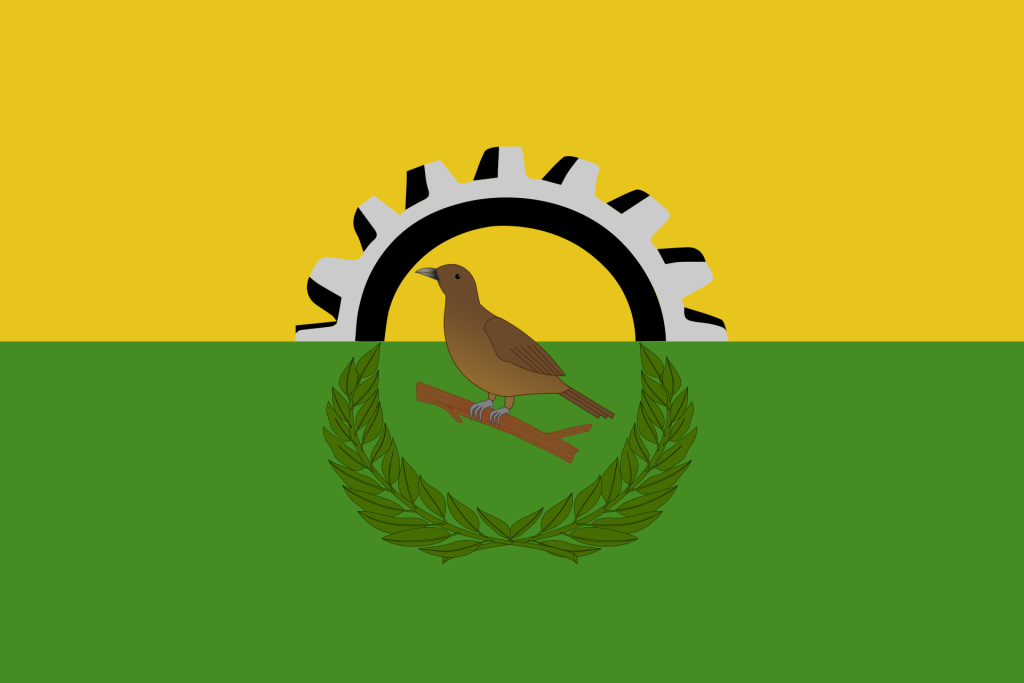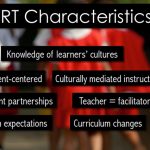Welcome to the American TESOL Institute’s comprehensive guide for teaching English in San Pedro Sula, Honduras. Known as the “Industrial Capital of the Sula Valley,” this vibrant city offers a unique blend of economic opportunity, cultural richness, and natural beauty. Whether you’re a seasoned educator or a newcomer to Teaching English to Speakers of Other Languages (TESOL), San Pedro Sula presents an exciting destination to advance your career while immersing yourself in Central American life. This guide expands on the essentials, providing you with detailed insights into why this city is a top choice, what you can expect financially, who you’ll teach, and how to make the most of your experience—both in and out of the classroom.
1. Why San Pedro Sula?
San Pedro Sula, nestled in the lush Sula Valley just an hour’s drive from the Caribbean coast, is a powerhouse of Honduran commerce and culture. Often dubbed the “Industrial Capital of Honduras,” the city thrives on a robust economy fueled by agriculture, manufacturing, and technology. Vast banana and sugarcane plantations stretch across the surrounding landscape, forming the backbone of the region’s agricultural output and supporting Honduras’s export market. Nearby, Puerto Cortés—the largest seaport in Central America—handles a significant share of the country’s trade, moving everything from coffee to textile goods. This logistical advantage has transformed San Pedro Sula into a hub for light-manufacturing firms and call centers, cementing its status as a critical player in global supply chains.
In recent years, the city has embraced technological innovation with the establishment of Altia Smart City, a cutting-edge technology park that hosts 70% of Honduras’s Business Process Outsourcing (BPO) operations. This development has attracted multinational corporations and created a surging demand for English-proficient professionals, making San Pedro Sula a prime location for TESOL educators. The American TESOL Institute recognizes this opportunity, preparing teachers to meet the needs of a workforce eager to master business English.
Beyond its economic dynamism, San Pedro Sula offers a rich cultural experience. The Museo de Antropología e Historia provides a window into the region’s indigenous and colonial past, while local art galleries showcase Honduran creativity. The annual Feria Juniana festival fills the streets with music, dance, and traditional cuisine, offering a vibrant celebration of local identity. The city’s infrastructure further enhances its appeal: the Ramón Villeda Morales International Airport connects San Pedro Sula to major cities across the Americas, and well-developed road networks make exploring the region a breeze. For TESOL teachers, this combination of professional opportunity, cultural depth, and accessibility makes San Pedro Sula an exceptional place to live and work.
2. Pay, Savings, and Cost of Living
Teaching English in San Pedro Sula offers a financially rewarding experience, particularly when paired with the city’s affordable cost of living. Local language institutes typically offer full-time contracts with monthly salaries ranging from $700 to $1,100 USD. For those with specialized skills or experience, corporate training positions—often tied to the BPO sector or multinational firms—can yield even higher earnings. The American TESOL Institute equips its graduates to capitalize on these opportunities, ensuring you’re prepared to secure competitive roles.
Living costs in San Pedro Sula are manageable, allowing teachers to save or enjoy the city’s offerings. A single person’s monthly expenses average around 28,000 Honduran Lempiras (HNL), equivalent to approximately $1,130 USD. However, many expatriate teachers, including those trained by the American TESOL Institute, report thriving on budgets as low as $500 USD per month. This is achievable by opting for shared housing or homestays, shopping at local markets for fresh produce, and dining at affordable eateries.
Accommodation options cater to various preferences and budgets. A one-bedroom apartment in the city center ranges from $300 to $500 USD monthly, while suburban rentals fall between $200 and $350 USD. Utilities, including electricity, water, and internet, typically cost an additional $100 to $150 USD per month. Transportation is budget-friendly, with public buses and taxis offering low-cost options, and ride-sharing services providing convenience at reasonable rates.
Food is another area where savings shine. A meal at an inexpensive restaurant costs between $3 and $5 USD, while a three-course meal at a mid-range establishment ranges from $15 to $25 USD. Local markets provide fresh fruits, vegetables, and meats at bargain prices, making home cooking both economical and enjoyable. Healthcare is accessible, with private insurance plans costing $50 to $100 USD monthly, ensuring quality care without breaking the bank.
With these factors in mind, TESOL teachers in San Pedro Sula can cover their expenses comfortably, save for future goals, or fund weekend adventures—all while enjoying a fulfilling lifestyle in Honduras.
3. Learner Profiles & Classroom Angles
As a TESOL teacher in San Pedro Sula, you’ll encounter a diverse range of learners, each with distinct goals and backgrounds. The American TESOL Institute prepares you to tailor your lessons to these profiles, ensuring impactful and engaging instruction.
One key group is call-center recruits—young professionals aiming to enhance their English for customer service roles. These learners focus on accent reduction, fluency, and mastering soft-skills scripts. You might design lessons with role-playing exercises, pronunciation practice, and interactive dialogues to mirror real-world call-center scenarios. Another significant demographic is maquila supervisors from the textile and manufacturing sectors. These individuals need English to negotiate with international supply-chain partners, requiring lessons rich in business vocabulary, negotiation phrases, and cross-cultural communication skills. Simulations of supplier meetings can bring these concepts to life.
Agribusiness managers form another vital learner group, often preparing for trade fairs in cities like New Orleans or Hamburg. Their training should emphasize industry-specific terms, presentation skills, and networking language. Incorporating agricultural reports or trade fair materials can make lessons practical and relevant. Beyond these professionals, you may teach university students seeking academic or career advantages, or young learners eager to explore English through play. For university students, academic writing and critical thinking exercises work well, while games, songs, and storytelling captivate younger learners.
The American TESOL Institute encourages anchoring lessons in San Pedro Sula’s context. Discuss shipping logistics using Puerto Cortés news, explore climate-risk vocabulary with references to hurricanes (like those in 1974, 1998, and 2020), or tie sports-marketing English to the city’s professional soccer stadiums. These strategies make learning tangible and meaningful, enhancing student engagement.
4. Fun Facts to Liven Up Class
Spicing up your lessons with fun facts about San Pedro Sula and Honduras can captivate students and deepen their cultural appreciation. The American TESOL Institute suggests weaving these tidbits into your teaching to create a dynamic classroom atmosphere.
San Pedro Sula earned the nickname “La Ciudad de los Zorzales” (The City of the Thrushes) for the melodious thrushes that once greeted the dawn, offering a charming entry into discussions on wildlife or local history. The Yankel Rosenthal Stadium stands out as Central America’s only professional soccer pitch with synthetic turf designed to withstand tropical rains—an intriguing hook for lessons on sports, climate, or innovation. Historically, the city marked a milestone in 1990 with Honduras’s first textile “free-zone” maquila, laying the groundwork for today’s BPO boom and English demand—a perfect segue into economic or career-focused topics.
Honduran cuisine also provides flavorful inspiration. Baleadas—flour tortillas stuffed with beans, cheese, and more—are a beloved staple, ideal for sparking food-related conversations or a class potluck. The Feria Juniana festival, held each June, brings parades, music, and dance to the streets, offering material for lessons on holidays, culture, or creative writing. These facts not only entertain but also connect students to their surroundings, enriching their English-learning journey.
5. Weekend Geography Field Trips
San Pedro Sula’s location is a gateway to stunning weekend escapes, blending professional life with adventure. The American TESOL Institute highlights these destinations to inspire both relaxation and classroom creativity.
Just 45 minutes away by 4×4, Cusuco National Park offers cloud forests teeming with quetzals and rare orchids. Use this trip to spark biodiversity debates, asking students, “Should Honduras expand eco-tourism permits?” A 1-hour-10-minute drive takes you to Lago de Yojoa, a crater lake with bird-watching and craft-beer trails—perfect for descriptive writing exercises capturing sensory details. The Copán Ruins, a 3-hour journey via the western highway, reveal an ancient Maya city with intricate carvings, ideal for past-tense storytelling about trade or daily life.
Two hours away, Tela and Punta Sal Marine Park on the Garífuna coast boast pristine beaches and cultural heritage, lending themselves to conditional role-plays on sustainable tourism. Pico Bonito National Park, 2 hours and 30 minutes by car, features rainforests and waterfalls, great for reported-speech activities like interviewing a park ranger on conservation. Encourage intermediate learners to craft bilingual travel brochures for these sites—practical projects that double as portfolio pieces.
These excursions offer a refreshing break and rich material to enhance your TESOL lessons, blending language skills with real-world exploration.
6. Safety & Lifestyle Notes
San Pedro Sula has worked hard to improve safety, shedding much of its past reputation through increased patrols and secure zones like Altia Smart City. Still, the American TESOL Institute advises choosing gated accommodations in neighborhoods like Barrio Rio de Piedras or Jardines del Valle. After dark, opt for ride-sharing or radio-taxis, and keep valuables low-key to minimize risks.
Lifestyle-wise, the city buzzes with opportunities to connect. Join the “English Teachers in Honduras” Facebook group to network with peers, or dive into the expat scene with theater, cinema, and live music events. Healthcare is reliable, with private hospitals accessible via affordable insurance plans. By staying cautious and engaged, you’ll enjoy a safe and vibrant life in San Pedro Sula.
7. Fast-Track Your Start
Ready to teach in San Pedro Sula? The American TESOL Institute offers the tools to launch your journey. A 120-hour TESOL certification is the standard requirement, with business-English electives boosting your edge for corporate roles. Hiring peaks in January-February and July-August, aligning with training cycles, so time your job search accordingly. Network through the “English Teachers in Honduras” group or Altia Smart City’s “Talent Nights” to meet recruiters. Most teachers enter on a 90-day tourist visa, converting to a residence permit with employer support—coordinate with your school for a smooth process.
8. Sample Lesson Seed
Title: “From Banana Republic to BPO Powerhouse”
Level: Upper-Intermediate Business English
Activities:
- Warm-Up Quiz: Test students on San Pedro Sula’s export shift from bananas to BPO services.
- Vocabulary Focus: Teach terms like “logistics,” “supply chain,” “near-shoring,” and “value-added,” using local examples.
- Role-Play: Pair students to negotiate a textile deal between a Honduran firm and a Miami retailer, practicing business phrases.
- Reflection: Have students list three ways English boosts their careers, tying it to their goals.
This lesson, crafted by the American TESOL Institute, connects language skills to San Pedro Sula’s economic story, inspiring students and showcasing your teaching prowess.
Key Takeaway
San Pedro Sula blends low living costs, a thriving industrial scene, and access to rainforests and reefs, making it a standout destination for TESOL teachers. With the American TESOL Institute’s training and this guide, you’re equipped to thrive in a classroom as dynamic as the city itself—perfect for educators passionate about business English and Central American culture.


